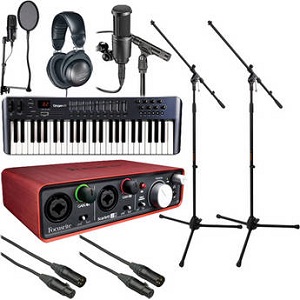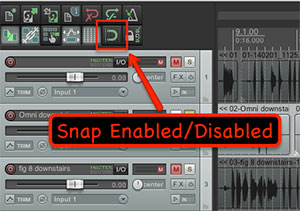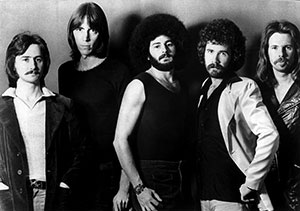
For the musicians out there: MusicTech.net has started an article series that might interest you. It’s called The Bluffer’s Guide to Music Technology. I am a believer in looking at the same basic concepts from multiple points of view, and the Bluffer’s Guide presents much of the same material as we do in our 6-part series, “How To Build A Home Recording Studio.” It assumes from the start, however, that the reader is going to be interested primarily in recording, mixing, and mastering music (hence the word “music” in the title). As with most of our content, our series is a bit more broad and is written for both musicians AND folks doing voiceover recording (including video narration, podcasts, VOIP audio, etc.). Also, I am pretty sure the MusicTech author is British (or possibly Australian) because he debates the pronunciation of the word “DAW” (digital audio workstation) by suggesting that it could be “door.”
To start with part one of The bluffer’s Guide To Music Technology, see www.musictech.net/2014/10/bluff-1/.
Cheers!
Simple But Awesome Reaper Snap Setting
 The Reaper blog just published a post about a setting I didn’t know about, and it really helps me a lot! It’s called the “Snap Relative to Grid” setting. In a lot of my tutorials, I warn people to pay attention to whether the Snap tool (looks like a magnet – see the pic on the left) is enabled or disabled. It’s incredibly useful when you want to snap the edges of your item to a gridline (which can be bars/beats, or minutes/seconds, etc.). But if you are trying to nudge something just a bit to the left or right on a track, having the Snap tool enabled will be trouble.
The Reaper blog just published a post about a setting I didn’t know about, and it really helps me a lot! It’s called the “Snap Relative to Grid” setting. In a lot of my tutorials, I warn people to pay attention to whether the Snap tool (looks like a magnet – see the pic on the left) is enabled or disabled. It’s incredibly useful when you want to snap the edges of your item to a gridline (which can be bars/beats, or minutes/seconds, etc.). But if you are trying to nudge something just a bit to the left or right on a track, having the Snap tool enabled will be trouble.
One problem I run into quite a bit is when I am dragging a bit of audio from one track to another. I don’t have a very steady hand (so you don’t want me doing brain surgery on you :)), so I almost always manage to slip the audio a bit left or right when I am just trying to drag it up or down. Of course, this will mess up the timing, and I often find myself undoing (“ctrl-z” is the best keyboard shortcut EVER) and trying again. Or I drag the edge of the audio item out beyond its actual start or stop time to get it to line up with a gridline, then turn on the Snap tool, then drag it up, then turn off the Snap tool. Craziness, I know! In my mind, I knew there was a way to keep the audio aligned in time while dragging to a different track, but I’m lazy, so I never looked it up.
Well, it turns out the answer is “Snap Relative to Grid.” You just go to the Snap/Grid settings (right-mouse click on the Snap tool) and put a check mark in the “Snap relative to Grid” box. That way, if the edges of your audio happen to fall between gridlines, and you want to drag the audio up to a different track, the edges will stay aligned with however far away the audio was from the nearest gridline to start with. In a nutshell, this means you can drag your audio clip up to a different track without worrying about it slipping left or right (earlier or later in time) in the process. In other words, it’s the right tool for the job I’ve been doing the hard way for years. Yay!
Here is Reaper’s blog post about it, along with an animation that shows you both how to select the option and what it does for your audio item when dragging it up or down to a different track. Hope this makes you as happy as it makes me :). http://reaperblog.net/2014/10/reaper-faq-what-does-snap-relative-to-grid-mean/
Example Of Vocal Doubling On Boston's "More Than a Feeling"
 I found something amazing on YouTube yesterday. Someone posted the audio (no actual video, just a static picture) of ONLY the lead vocal tracks from the 1976 Boston hit, “More Than a Feeling.” I’ve have always been a huge fan of lead vocalist Brad Delp (may he rest in peace), and to be able to hear what he sounded like without all the music on a song I’ve known most of my life is a real treat.
I found something amazing on YouTube yesterday. Someone posted the audio (no actual video, just a static picture) of ONLY the lead vocal tracks from the 1976 Boston hit, “More Than a Feeling.” I’ve have always been a huge fan of lead vocalist Brad Delp (may he rest in peace), and to be able to hear what he sounded like without all the music on a song I’ve known most of my life is a real treat.
But the thing I wanted to point out was the sound of a “doubled” lead vocal. I talk a lot about vocal doubling in both of our courses, “The Newbies Guide to Audio Recording Awesomeness 1 and 2.” It was pioneered in pop music by the likes of Les Paul and Buddy Holly as a means of making a single voice sound richer and “thicker.” It was also something the Beatles did a lot in the studio, to the point that an actual process was developed by Apple Engineer Ken Townsend at the request of “the lads” so they didn’t have to actually sing a part twice. (Trying to match the timing of the original track can be time-consuming.) That new process was called automatic double tracking, or ADT for short. I still think the original method of just singing a second track along to the first track – singing the lead vocal part twice – is a great (not to mention cheap :)) way to double a vocal part.
In the video below, you can hear what vocal doubling sounds like on Brad Delp’s voice. The recording also has the harmony parts on it, and those are not what I’m talking about; I am referring only to the “apparent” sound of Brad’s voice singing alone on the verses without the harmony – for example, “I woke up this morning and the sun was gone,” etc.
I cannot say with absolute certainty whether this recording was made by having Brad sing twice or if it was done via a doubling effect, but IF I had to guess, I’d bet he sang twice. He was used to singing along with his own voice, since all those harmony parts were also sung by Brad Delp. You didn’t think Boston had that many actual singers did you? :). Actually, they would sometimes hire extra singers to sing the harmonies in the live shows.
Without further ado from me, listen for yourself below:
Sale On Halloween Sound Effects and Music
 AudioMicro is having a promotion for Halloween sound effects and/or royalty-free music.
AudioMicro is having a promotion for Halloween sound effects and/or royalty-free music.
These are perfect for using in your Halloween videos, productions or haunted houses. Or just play them on your front porch or out the window to add to the spook of your house for all the trick-or-treaters:).
CLICK HERE for Horror Sound Effects. Then get 20% off by entering promo code halloween2014 at checkout!
CLICK HERE for royalty-free Halloween Music, and do the same as above – put halloween2014 in for the promo code at checkout.
Sam Smith Sings Harmony With Himself In Stay With Me
Sam Smith’s song, “Stay With Me,” is a huge hit in 2014. We were just watching a segment about him on CBS Sunday Morning and heard something fascinating. In the chorus of the song, the harmony makes it sound like Sam is being backed up by a full choir.
But it’s no choir! Sam actually recorded himself 40 times!
This Is Why I Learned Audio Recording
I talk about this kind of thing all the time. That’s because the ability to sing harmony with myself is why I got into audio recording in the first place. And it is easier than ever before for anyone to do it on their computer through a process called “overdubbing.”
You can do this with any software that allows you to do multi-track recording, even the free program, Audacity. In fact, the below video – an excerpt from our tutorial course, The Newbies Guide To Audio Recording Awesomeness 1: The Basics With Audacity – shows you how to do overdubbing to sing harmony with yourself, even with no budget for gear (maybe $5.00 for a PC microphone to get started):
That demo was just 4 versions of you. If you want to do what Sam Smith did, it isn’t very hard at all. Just sing like him and sell millions of recordings;-). Oh, the harmony thing. Yes. All you need to do is to follow the instructions in the video…multiplied by 10!
In the interview, Sam said a lot of people think he hired a gospel choir to sing backup on the song. He said that actually upsets him a bit. “I want the credit,” he said with a smile.
[UPDATE]: Since I wrote this article, I have created an entire course dedicated to singing harmony with yourself – or other people too (if you must :)). the course is: Harmony Recording Awesomeness.
So now you, too, can go forth and overdub yourself into a choir.
For more information on singing harmony with yourself, see our page: Sing Harmony With Yourself – Learn How to Record Your Voice on Your PC and Sing Along With It!
And if you’d like some free videos from our course, Harmony Recording Awesomeness…

